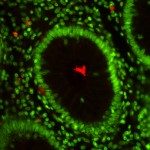Link to Pubmed [PMID] – 3139660
J. Biol. Chem. 1988 Oct;263(29):14654-60
The Bacillus subtilis hom gene, encoding homoserine dehydrogenase (L-homoserine:NADP+ oxidoreductase, EC 1.1.1.3) has been cloned and its nucleotide sequence determined. The B. subtilis enzyme expressed in Escherichia coli is sensitive by inhibition by threonine and allows complementation of a strain lacking homoserine dehydrogenases I and II. Nucleotide sequence analysis indicates that the hom stop codon overlaps the start codon of thrC (threonine synthase) suggesting that these genes, as well as thrB (homoserine kinase) located downstream from thrC, belong to the same transcription unit. The deduced amino acid sequence of the B. subtilis homoserine dehydrogenase shows extensive similarity with the C-terminal part of E. coli aspartokinases-homoserine dehydrogenases I and II; this similarity starts at the exact point where the similarity between E. coli or B. subtilis aspartokinases and E. coli aspartokinases-homoserine dehydrogenases stops. These data suggest that the E. coli bifunctional polypeptide could have resulted from the direct fusion of ancestral aspartokinase and homoserine dehydrogenase. The B. subtilis homoserine dehydrogenase has a C-terminal extension of about 100 residues (relative to the E. coli enzymes) that could be involved in the regulation of the enzyme activity.
